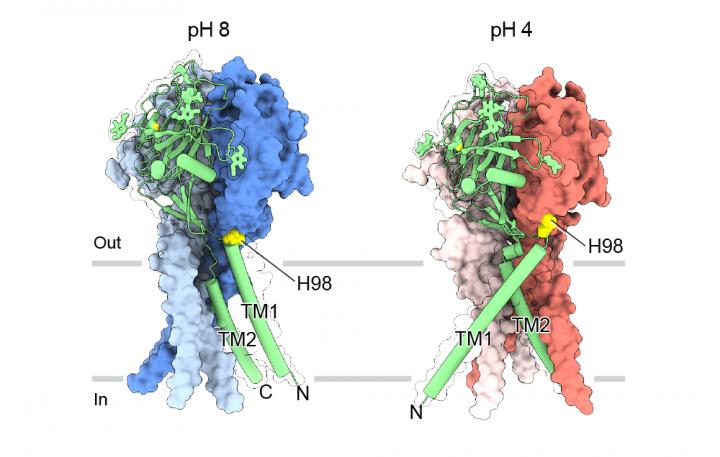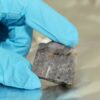For the first time, scientists have visualized a new class of molecular gates that maintain pH balance within brain cells, a critical function that keeps cells alive and helps prevent stroke and other brain injuries.
These gates, called proton-activated chloride channels (PAC), nest within cell membranes and regulate the passage of small molecules called chloride ions into and out of cells. This allows cells to sense and respond to their environment.
“Proton-activated chloride channels have only recently been described but they are critical for cell survival, particularly in the brain,” said Wei Lü, Ph.D., a Van Andel Institute assistant professor and co-corresponding author of the study, which was published today in Nature. “Our new images, coupled with our findings into how these channels work, provide much-needed molecular blueprints that will help answer long-standing questions in the field and provide new insights into how these channels may be therapeutically targeted in disease.”
The images reveal a wedding bouquet-like structure, with parts that change configuration in response to environmental pH. When pH shifts from alkaline to acidic, a key pH sensor moves from its “resting” location and is inserted in an “acidic pocket,” which signals that the gate allowing ions in and out of the cell should be open. This specific mechanism has never before been described.
This study is a collaboration between the Lü Lab at Van Andel Institute and a group led by Zhaozhu Qiu, Ph.D., an assistant professor at Johns Hopkins University School of Medicine and co-corresponding author of the paper. The Johns Hopkins team first reported the discovery of PAC in Science last year.
Solving PAC structures are another important, early step toward an understanding that may one day impact human health.
Key acid-activated protein channel identified
More information:
Zheng Ruan et al, Structures and pH-sensing mechanism of the proton-activated chloride channel, Nature (2020). DOI: 10.1038/s41586-020-2875-7
Provided by
Van Andel Research Institute
Citation:
Near-atomic ‘maps’ reveal structure for maintaining pH balance in cells (2020, November 4)
retrieved 4 November 2020
from https://phys.org/news/2020-11-near-atomic-reveal-ph-cells.html
This document is subject to copyright. Apart from any fair dealing for the purpose of private study or research, no
part may be reproduced without the written permission. The content is provided for information purposes only.



